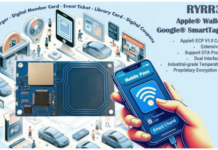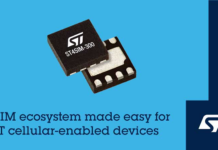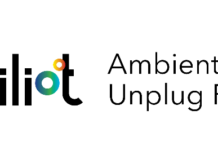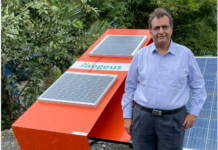
It’s that time of year again. The “10 technology trends” and “5 ways the Internet of Things (IoT) will change your business next year” prognostications are coming out. I always read these and enjoy the critical thinking behind the authors’ lists. And every year I think about looking back at last year’s lists to see how well the forecasters did, but there isn’t much value in “I told you so” whether you are saying it or hearing it so I let that urge pass.
I find more value in learning from mistakes and successes in the analysis than judging the forecasts. So this year I thought I would do something a little different. I looked back at the events of 2016 and evaluated which events marked real progress in the advancement of IoT. So here, in no particular order, are my 10 giant steps forward for the Internet of Things in 2016.
1. Softbank acquires ARM showing value of the edge.
Softbank’s acquisition of ARM for 25 times revenue was a force major establishing the of the value of the edge in IoT. Softbank captured two key resources for its IoT strategy: a dominant foothold in the infrastructure of the IoT in the form of microprocessors at the edge and over 5,000 people who understand how to create and innovate in the digital world. The price fed bubble talk for many but provided insight and focus within the technology stack for those who understand that IoT is not a fad but a major shift that will create new value for decades. I also note that the press release was the first I have ever seen that cited singularity as an M&A thesis.
2. GE moves Predix to Microsoft Azure to focus on application services.
Predix was one of the big five IoT cloud platforms but when GE moved to host it on Azure and then followed with a string of IoT application supporting acquisitions they solidified the consolidation of the cloud platforms and clarified that the real value was at the application layer. GE now refers to Predix as a cloud operating system and offers an array of IoT application support services: data analytics, equipment health forecasting, field service logistics. Predix is to industrial IoT as Windows is to desktop computing and GE is assembling its version of “Office” for those looking to transform their businesses with the IoT.
3. Fitbits used in 100 clinical trials validates consumer wearables.
One of the most discussed topics in healthcare is the “snake oil” of the new wave of IoT-driven consumer health products. Meanwhile, behind all the arguments of accuracy, precision and clinical relevance researchers are quietly using Fitbits in over 100 clinical trials of devices and therapies. The emergence of this consumer-wearable technology in clinical validation shows that the value of sensors is not apriori determined by its accuracy, rather its value is in what it measures and the importance of same. In this case, researchers get new insights into human behavior and its effect on the devices and therapies they are testing.
4. Omada Health behavior modification app receives CMS reimbursement.
2016 will be remembered as the year when therapists finally embraced human behavior modification as a method of care. Every year the CDC publishes a report that highlights how 50 percent of chronic care costs, which make up 85 percent of all healthcare costs, are due to patient behavior, or more correctly misbehavior. Omada Health was a leader in a study that showed how mobile apps integrated with simple DIY consumer devices like weight scales and activity monitors help patients with pre-diabetes change their behavior, lose weight, and avoid the onset of the disease. Omada showed that a mobile app operated by patients can provide meaningful medical outcomes. Centers for Medicare-Medicaid Services (CMS) is approving reimbursement for that care.
5. Verizon and AT&T solidify IoT ecosystem with launch of LTE Cat M networks.
If we put aside the challenge of following the LTE steering group’s IoT acronym shell game — Cat 0, Cat 1, Cat M1, Cat M2, NB-IoT — the fact that both ATT and Verizon announced the near-immediate availability of an IoT-specific networks marked carrier recognition of the IoT as a market separate from smartphones. Some say the announcements were an attempt to forestall the emergence of Low Power Wide Area Network (LPWAN) upstarts like LoRaWAN, Ingenu and Sigfox. and this certainly played a role for these U.S.-based carriers. But the Cat M announcements validate the ecosystem of everything from components to modems to spectrum for developers and give them a familiar carrier option for their IoT solutions. Attention now shifts to the service plan designs for these new applications, i.e. cost per megabyte versus cost to connect versus cost per year per device. The LPWAN competition will shake out the business models and developers can design with the confidence that their applications will be supported by network suppliers.
6. Qualcomm moves from mobile to IoT, acquires NXP.
The value of Moore’s Law has shifted from increased processing power at reduced cost to reduced power at reduced cost. As the dominant provider of integrated processor and connectivity technology to the mobile and smart phone industry, Qualcomm’s acquisition of broad line microprocessor and semiconductor manufacturer NXP confirmed the IoT as the growth market for the semiconductor industry. Qualcomm bought both NXP’s edge-capable devices and the long tail distribution channel that it knew it needed to reach the emerging suppliers of IoT solutions. I hope that the technology flow will go both ways and the emerging IoT developers will gain access to the technologies Apple and Google have had enjoyed from Qualcomm.
7. NEST “bricks” Revolv and everyone learns a lesson.
When it comes to the IoT, hardware and software are inseparable. You can’t treat hardware like it is software. Nest became the poster child of how not to manage an IoT product lifecycle when it announced that not only would it no longer provide updates to its Revolv product, it was going to “brick” them all. This might work when users can just download a newer version of an app, but this doesn’t work when the product is controlling people’s homes and part of their physical life. The uproar was immediate and harsh, deservedly so. Nest validated all the traditional home control manufacturers’ prognostications that Nest was not a serious home control product. IoT product managers all learned a lesson from Nest’s blunder, or should have.
8. Dyn DDOS attack shows data security is not just about me.
The Dyn distributed denial of service (DDOS) attack was arguably the security hack event of the year. The interesting thing about it was that it was not about privacy and personal information. It was about poorly designed and constructed devices allowing major interruption of infrastructure and thus other internet-based services. I will not go into the details of the hack here (they are covered thoroughly elsewhere), but look for this event to open the door for government regulation and monitoring of the IoT device manufacturing industry. The manufacturers have obviously not regulated themselves to provide digital security and now their products have become a threat to the entire country. Three key lessons for manufacturers from this event: (1) security is hard to retrofit, (2) security is not just IT’s problem, and (3) security is about device behavior as well as data.
9. Uber and Tesla convert self-driving cars to regulatory issue.
While generally I do not like government involvement in business enterprise, the entry of regulatory constraints in a technology space is usually a sign of both maturity and consumer adoption. Uber, an internet-based ride-sharing service, is centralizing the sharing part of their business by taking car owners out of the loop and replacing them with Uber-owned self-driving vehicles. Engineers, apparently the safest drivers with the best judgement, were left in the passenger seat but the cars were autonomous. Uber, which has become an uber-lawyer enterprise, fighting government-taxi duopolies around the world, is now calling attention to the lack of regulation for self-driving cars. On a less positive front, Tesla put self-driving cars at the center of attention when one of its vehicles, while in self-driving mode, was involved in the first self-driving car death. The Tesla events highlight the challenge of human involvement in the design of autonomous safety critical systems. Experts in the field, e.g. avionics, will tell you that it is not enough to make the system work, you also must design it to deal with operator error. Self-driving cars are no longer an engineering challenge and now take on the much slower process of managing liability by establishing regulatory environments that are both socially acceptable and economically viable.
10. Pokemon Go! shows the human side of augmented reality.
I am not sure many IoT developers played or studied the Pokemon Go craze, but those working on augmented reality applications should be very excited. The speed with which the game was adopted and enthusiasm of its players is a testament to the power of Augmented Reality (AR) in using digital information while performing real world tasks. Artificial Intelligence (AI) and Virtual Reality (VR) seem to get more attention in the news and popular media due to their prominence in science fiction, but AR offers near-term material gains in productivity, safety and quality through simple visual integration of digital information with real world activities. Pokemon Go showed developers three important lessons: (1) handheld AR is so intuitive even children can easily use it, (2) even low fidelity scene registration is compelling to the human visual experience when combined with geolocation, and (3) existing mobile technology is sufficient to effectively implement, i.e. this is a software and experience design problem.
So there they are. I didn’t predict any of these, but neither did anyone else is most cases. I hope that by highlighting the events and understanding why they are important others will continue forward with these lessons. For those familiar with the children’s game Simon Says you may feel, like me, that many of these giant steps were taken behind our backs. But given the expectations for how the IoT will change our lives I’m okay with that.
Source: http://www.cio.com/


















